Red clover should never, ever, be thought of as a useless weed that needs to be mowed out of your lawn. Not only does this common clover boast a plethora of healing properties, it also tastes great in lemonade and either hot or cold teas.
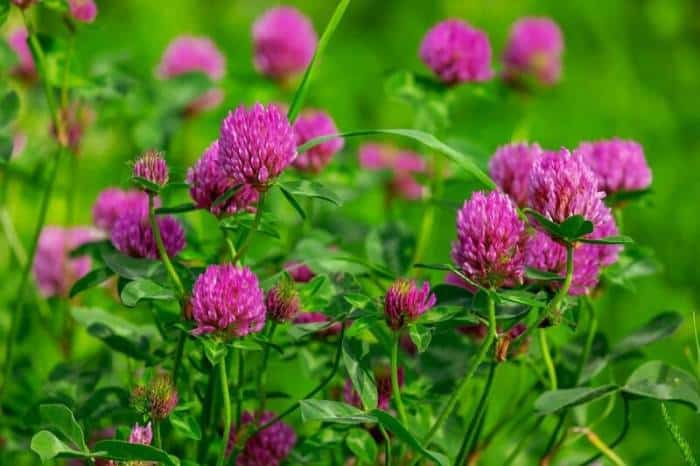
Both red clover and the even more common, white clover, are classified as perennial legumes. Clover is high in fiber and protein. Red clover, which is my opinion nearly always clearly looks purple, flowers during the early spring growing season. This species of clover is substantially larger than white – or Dutch, clover.
Red clover is also commonly referred to as: purple clover, beebread, cow clover, trefoil, wild clover, clove, meadow clover, and trifolium.
Red Clover Nutrient Value
This clover is a rich source of vitamins A, B-2, B-3, C, and E. It also has a small amount of vitamin B. Red clover contains substantial amounts of calcium, chromium, magnesium, lecithin, potassium, and silicium.
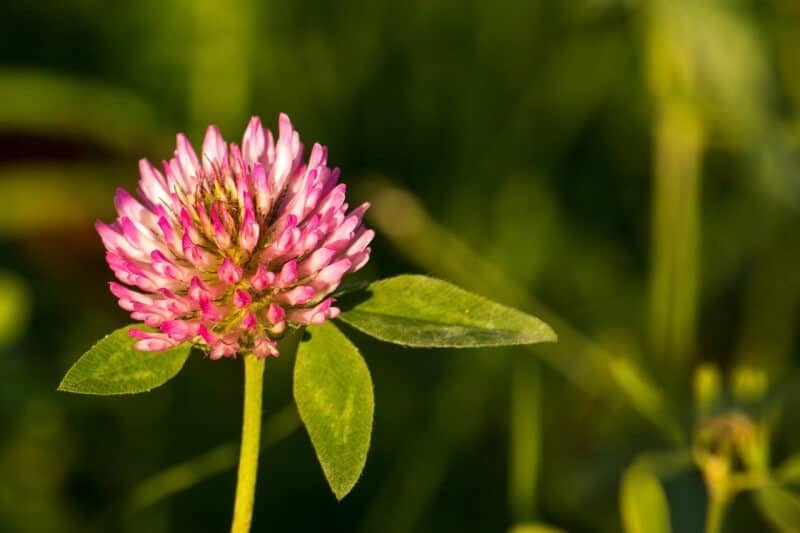
How to Identify Red Clover
- The plant typically stands about half a foot to two feet tall.
- This perennial occasionally shows signs of branching.
- Red clover has erect stems that can sprawl when undisturbed.
- The stems on red clover plants are hairy.
- The compound leaves are trifoliate and alternate up the stems.
- The compound leaves on the lower portion of the stems feature lengthy and hairy petioles.
- Red clover leaflets are approximately 3/4 inches across and 2 inches long.
- Leaves are oval to a little obovate in shape.
- The tips are blunt, and the margins of the leaves are smooth.
- In the middle area of each leaf there is typically a light green or white chevron style shape.
- A pair of ovate stipules that are about 1/2 of an inch long area present at the base of each compound leaf.
- The stems end in the flowerheads just above 1 to 3 leaflets.
- Red clover flowerheads are about 1 inch across, and feature copious amounts of individual upright petals that are purple to pink to red in shade.
- The closer the petals get to the base of the flowerhead, the color tapers and becomes lighter.
- Each red clover flowerhead contains a seedpod that houses 1 or 2 heart-shaped seeds.
- The root system of this species of clover consists of a sturdy taproot that generates rhizomes. The rhizomes allow red clover to reseed itself of spread vegetatively.
Blooming Period
Red clover blooms from the spring to the late summer in most regions – sometimes into the early fall. The flowers on this medicinal weed boast a slight honey smell.
Red Clover Look-alikes
Crown Vetch, in some people’s opinion, looks enough like red clover that they should be considered look-alikes.
I personally disagree completely, but crown vetch is not edible or useful, so make sure you can tell these two purple wild plants apart. It is good to help naturally fight soil erosion, but definitely not safe to consume or use in even topical herbal remedies.
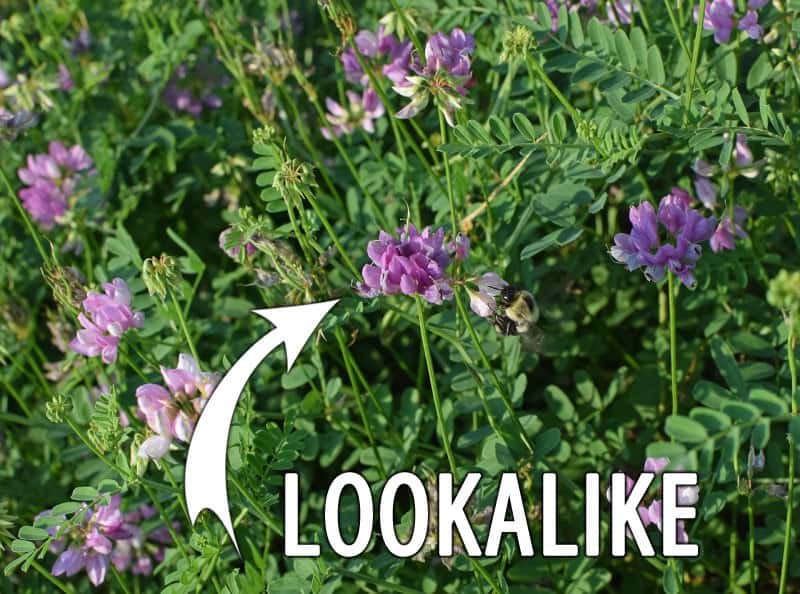
Purple thistle is likely the closed wild plant that resembles red clover – although still distinctly different when given more than a passing glance. Some species of thistle are considered edible, but not all.
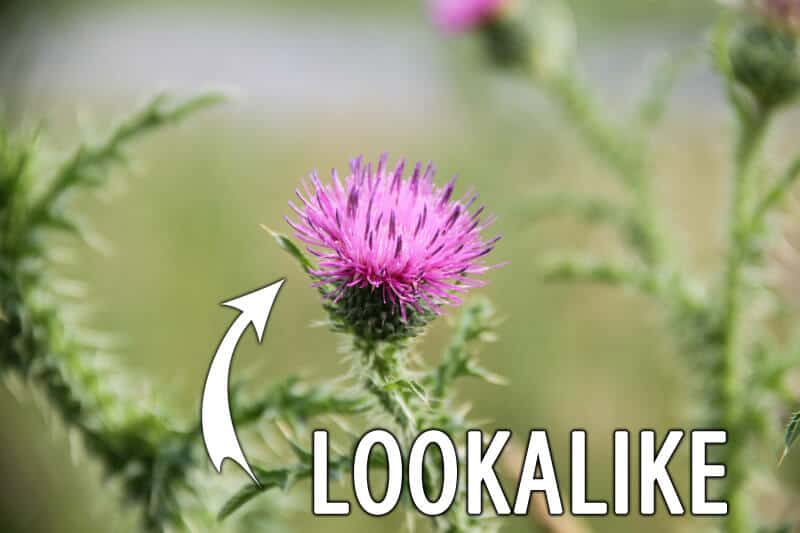
The flowerhead of a thistle does not feature color taping on the petals, and includes a green bulb shaped portion between the stem and the purple portion of the flowerhead.
Other lookalikes include:
- shamrock
- suckling clover
- iron cross
Where to Find Red Clover
The herbaceous flowering plant is part of the bean Fabaceae family. It is native to northwest Africa, Europe, and Western Asia, but can now be found throughout most regions in the United States. Red clover is typically considered agricultural zone 3 to 8 hardy.
Red clover prefers to grow in a well draining, loamy or clay soil in full sun areas, but can tolerate partial shade. Although red clover grows wild in little patches, you can buy seeds and cultivate it yourself.
Typically, red clover is grown as a cover crop, so finding little seed packets at a garden store is unlikely. Instead, search in an agricultural supply store or go online to find 5 pound bags of red clover seeds.
How to Grow Red Clover
Unlike white clover that reaches a shorter height and spreads in lateral fashion, red clover grows tall but not broad – making it possible to cultivate the plant easily in gardening containers.
This species of clover has a life cycle of about two to three years. Even under intense grazing conditions, red clover can reseed itself in a hardy fashion. Red clover adds nitrogen to the soil by way of the root nodules it forms to accommodate the plant’s rhizobial bacteria.
White clover is an excellent companion plant for red clover when growing it in a field for easy foraging.
How to Harvest and Preserve It
For the best taste and highest possible level of potency, it is recommended to harvest the flowerheads of red clover about 7 to 14 days after blooms first appear. I typically harvest red clover all spring and summer long, and have been happy with the results of the natural home remedies I create.
Our horses and goats like to beat me to the red clover whenever possible. Ingesting too much sweet clover can be incredibly harmful, possibly even lethal, to most species of livestock.
To harvest a flowerhead, simply pop or snip off the blossom. Dry the flowerheads on a rack or screen in the sun (takes only a couple of hours to dry thoroughly) or put them on a dehydrator on the herbs and nuts setting for about four hours.
The red clover must be 100% dry before being stored or the plants will mildew and mold. If drying naturally in the sun, flip the flowerheads over halfway through the process to ensure even and full drying.
Never forage red clover (or anything else) from an area where it is likely that chemical pesticides or herbicides have been sprayed.
How to Use Red Clover
When treating minor wounds and burns, red clover is made into an infusion or a tincture, and applied to the injured area or used as part of a poultice treatment.
When taken as a tincture, the typical recommended amount for adults is 1/2 to 1 teaspoon consumed up to 3 times daily.
Red clover is typically consumed as either a hot or cold tea or a lemonde when consumed to treat internal health issues.
The clover can be turned into a flour, and used as both a baking and cooking additive. Red clover muffins and cookies are so delicious it surely won’t feel like you are taking a “medicine” when popping them into your mouth.
Warnings and Precautions
If you experience any muscle aches, vaginal bleeding or spotting, headache, or nausea, you may be having an allergic reaction to red clover. If this happens, discontinue use and consult a doctor.
Because calling 911 or making an appointment to see your doctor is likely going to be impossible during a SHTF or long-term disaster, it is best to try any foraged recipes or natural remedy ingredients now, while professional medical help is available instead of waiting until it is not.
I have a growing apothecary pantry on our survival homesteading retreat for use by our tribe. Each homemade gel capsule, dried herb, root, or flower, tincture, infusion, or salve is clearly labeled with all ingredients and warnings.
In addition to each label, the jars are numbered and correspond with a binder page number so the user can flip to the page for extended warnings and usage information.
Don’t assume that you (or the resident herbalist in your family or prepper group) will be mobile, alive, or make it home during a SHTF event. Cross-training survival skills and providing a hard copy of essential information in a place where other loved ones can find it, will be vital to their survival, and possibly even your own.
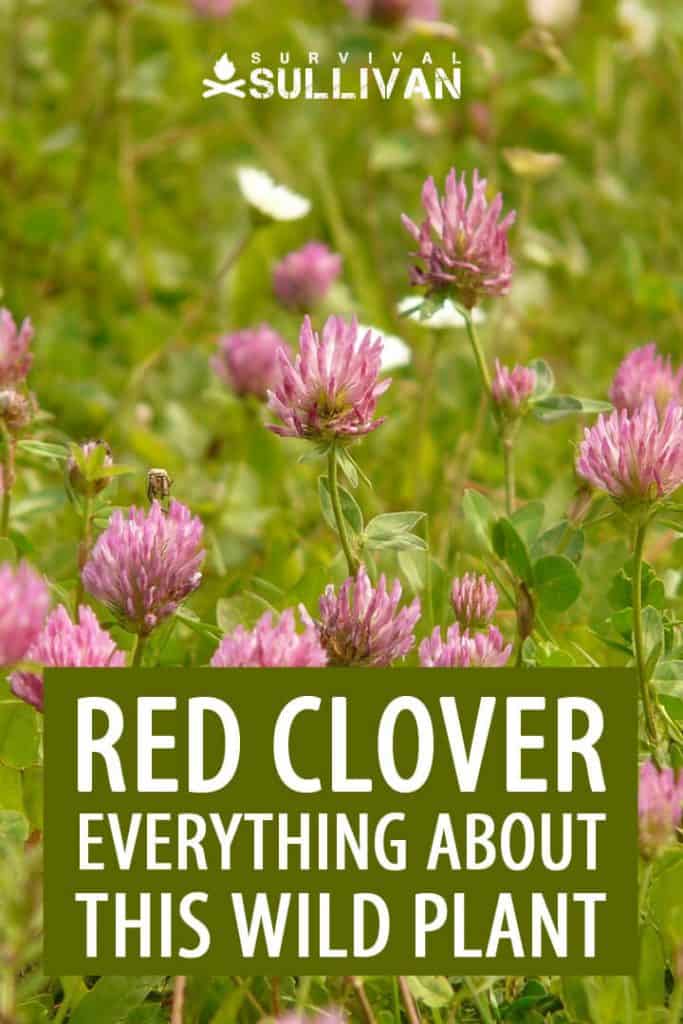

Tara Dodrill is a homesteading and survival journalist and author. She lives on a small ranch with her family in Appalachia. She has been both a host and frequent guest on preparedness radio shows. In addition to the publication of her first book, ‘Power Grid Down: How to Prepare, Survive, and Thrive after the Lights go Out’, Dodrill also travels to offer prepping tips and hands-on training and survival camps and expos.
